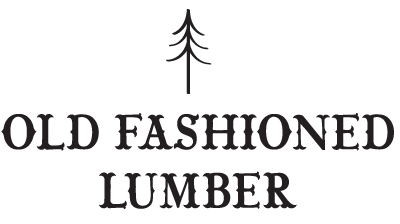With fine dining options limited or closed, people are living it up at home, crafting elegant charcuterie boards, hors d’oeuvres platters, and anything else they can to get rid of boredom. In this article, we will walk you through the process of making a wood and epoxy charcuterie board from scratch!
Step 1: Choosing Your Wood.

The type and shape of the wood you choose will have a huge impact on your final product. For serving boards, we recommend using any hardwood. This includes Walnut, Maple, Oak, Cherry, Hickory and more. You can view our list of wood types here.
If you want to start simple and don’t feel like getting epoxy involved in your first wood project, there’s absolutely nothing wrong with opting for a solid piece of wood. With no cracks or breaks to fill, this is the easiest option that will still leave you with a gorgeous board to show off!
If you’re a bit more advanced or just feeling adventurous, find a piece of wood with cracks or a break that you can cut and fill with your choice of epoxy. We recommend using a piece of wood that measures around 16″ in length and 12″ in width. Keep in mind that thicker boards will require more epoxy to fill in the cracks and/or fuse the two pieces together. To save epoxy (and money!), we suggest choosing a piece that’s around 1.5″-2″ max in depth. You can use a band saw or jigsaw to cut out your desired shape.
Step 2: Preparing Your Wood

The next step is to make sure your wood is completely flat. For this, we recommend using a planer for the best results. Here at the shop, we use an Oliver Planer. Run through the planer several times to achieve your desired thickness. After, sand both sides of the board until they are completely flat.
*If you don’t have a planer, sand the wood down as flat as you can. Make sure to move up through all grits of sandpaper for the best results. For sanding, we recommend using any Festool Rotex.
Step 3: Building a Form (Steps 3-4 are for boards made with epoxy ONLY!)

Once your board is planed and sanded, and you’ve decided what shape you’re making, it’s time to build a form. Lay your board on a bigger piece of wood and trace a template. Then, create a form using scrap wood and tuck tape, making sure that your form sits balanced so epoxy won’t flow out. Use hot glue on the corners if you feel like the tuck tape isn’t totally sealed.
Step 4: Mixing & Pouring Epoxy

We recommend using System 3 River Cast epoxy when making charcuterie boards. Pour 2 parts A and one part B into a cup or bucket. Mix your epoxy until both Part A and B have blended consistency without signs of hardening. While mixing, choose your powder color and use a popsicle stick or other disposable item to pick up a pinch of pigment powder. Just a tiny bit of pigment powder can drastically alter the tone of your epoxy, so start small and build your way up. We recommend using System 3 CastFX, Artopia Artisan Pigments, or Jacquard Pearl Ex. Pour the powder into your epoxy and keep mixing until the color is even. You can add color while mixing until you’ve achieved your desired tone. Once your epoxy is your chosen color and well mixed, make sure your board and form are on a perfectly even surface for a balanced pour. Pour into the cracks and river in your wood and form. Make sure not to overpour to avoid wasting and spillage, and try to pour just enough to slightly spread out over the top of the wood and completely fill and cracks and gaps. Your river shouldn’t be overflowing, but it should be full. Once your pour is complete, let dry for at least 3-4 hours or until fully hardened before beginning the sanding process.
Step 5: Sanding

Sand down your board, progressing through each grit starting with 100. Make sure that any extra epoxy is sanded off for a flat surface. For best results, sand up to an 8000 grit on the epoxy to give it glasslike clarity. Make sure to leave no sharp edges on your charcuterie board!
Step 6: Apply a Finish

At our shop, we love using Rubio Monocoat Oil Plus 2C Pure. This natural oil finish is food safe and brings out the vibrant character of any wood type. Dip a rag or towel in oil, and thoroughly spread and rub into all sides of your board. After a couple minutes, use another dry rag to wipe off any excess oil left on the board. Let your board dry for ~24 hours in a cool, dry place away from dust and irritants.
There you have it! After all of your hard work, you should find yourself with a charcuterie board that’s perfect to show off at your next home gathering or dinner party! Click here to view our gallery of past projects and charcuterie boards!
If you’re looking to start any project, visit our shop or give us a call. We want to help you find the perfect piece of wood for your project, whether it’s sourced by us or another reputable maker. If you so desire, we can take the wood you choose and transform it into a legacy piece that your family can use and cherish for years to come.

